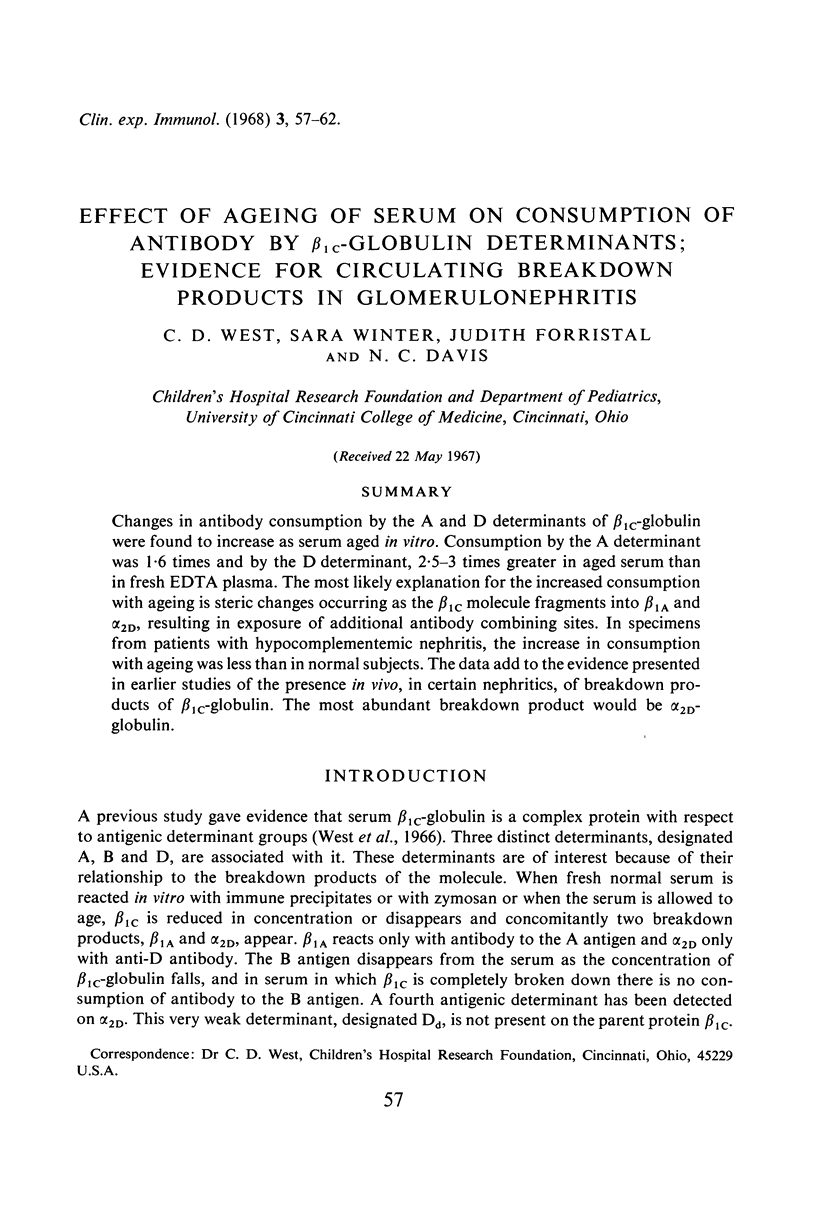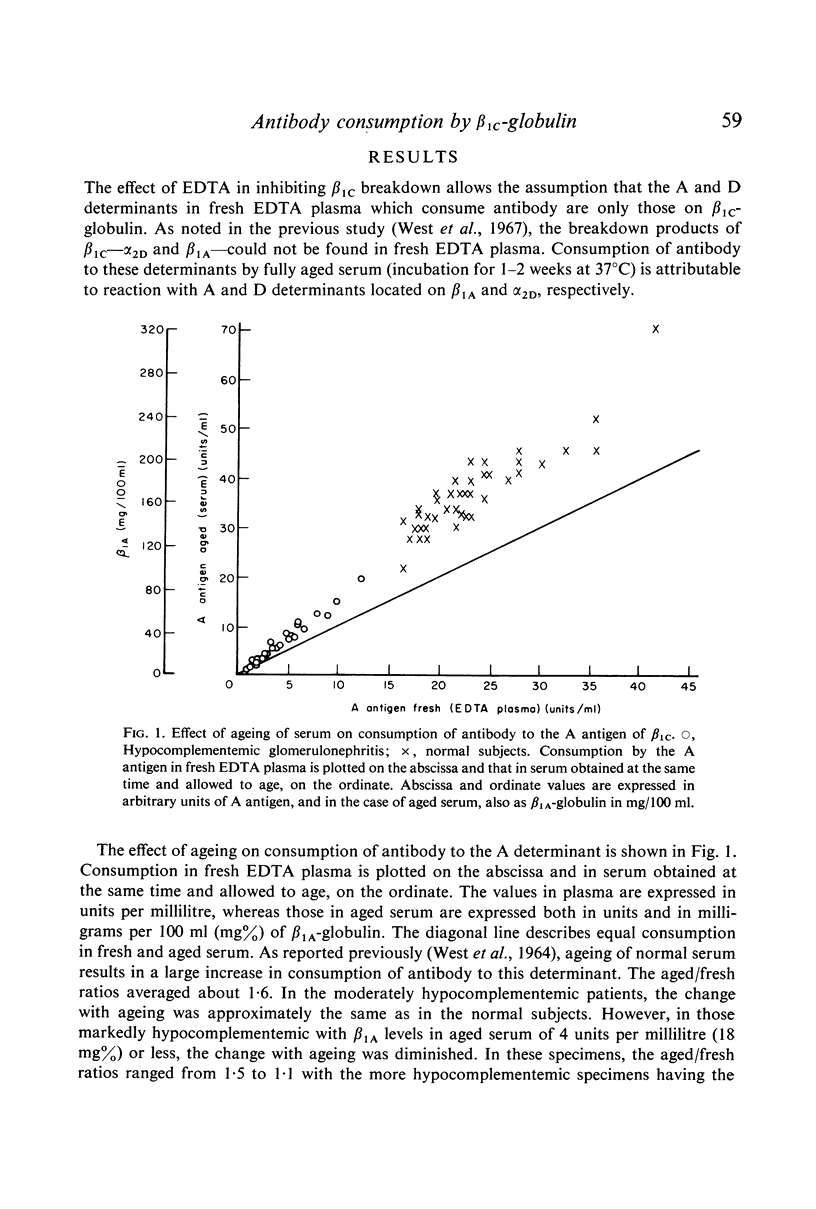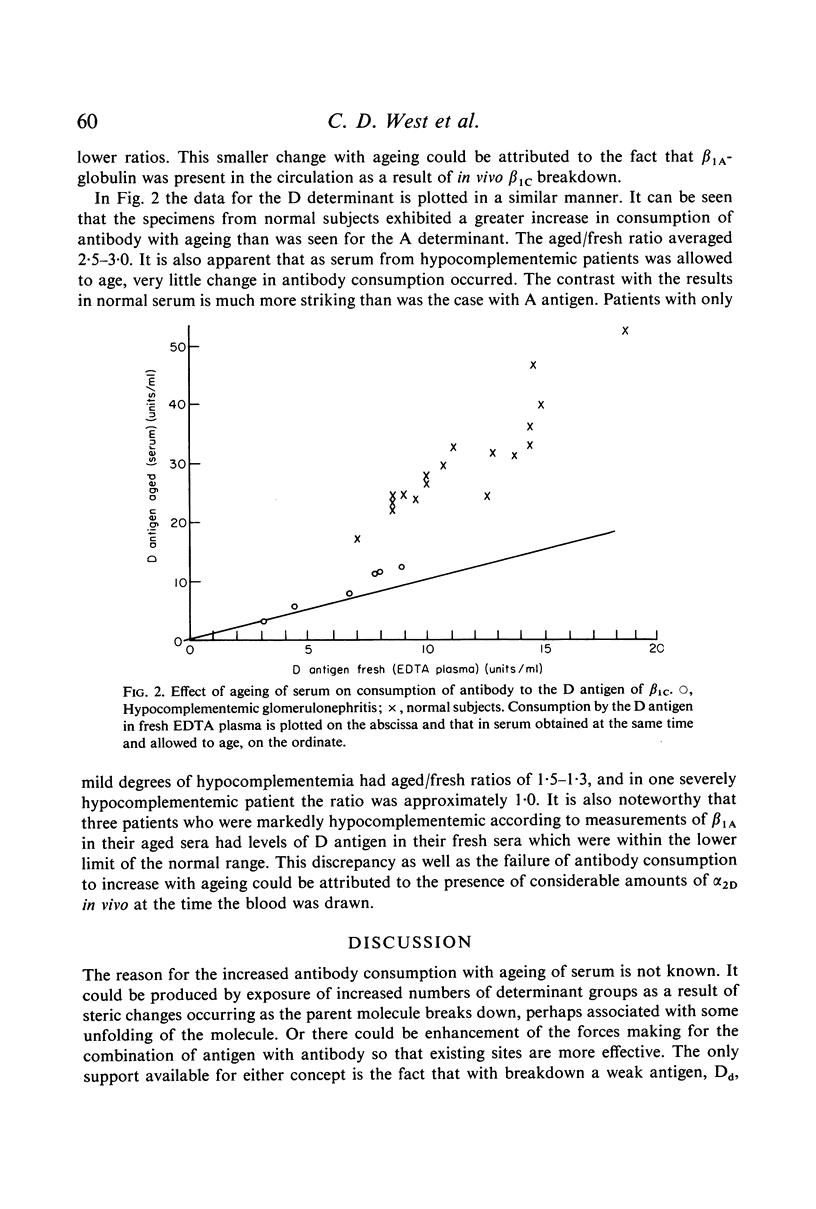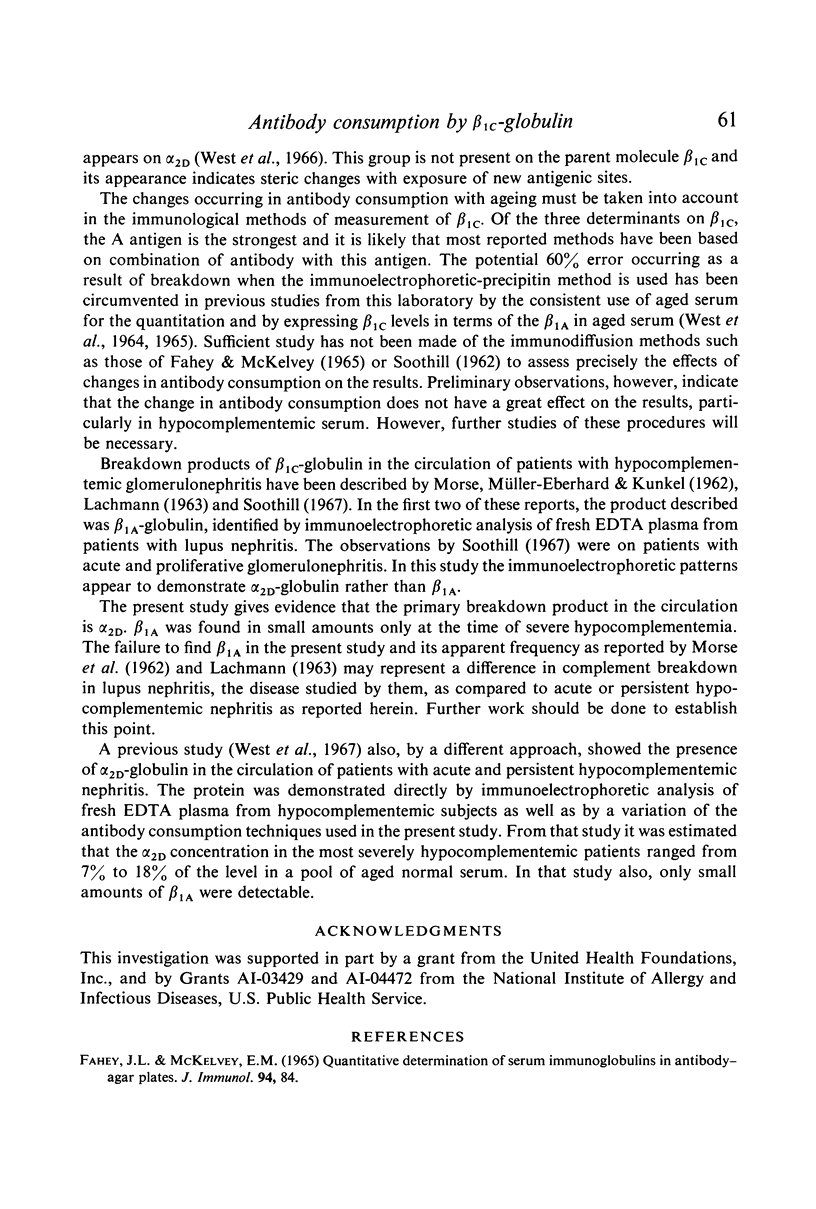Abstract
Changes in antibody consumption by the A and D determinants of β1C-globulin were found to increase as serum aged in vitro. Consumption by the A determinant was 1·6 times and by the D determinant, 2·5–3 times greater in aged serum than in fresh EDTA plasma. The most likely explanation for the increased consumption with ageing is steric changes occurring as the β1C molecule fragments into β1A and α2D, resulting in exposure of additional antibody combining sites. In specimens from patients with hypocomplementemic nephritis, the increase in consumption with ageing was less than in normal subjects. The data add to the evidence presented in earlier studies of the presence in vivo, in certain nephritics, of breakdown products of β1C-globulin. The most abundant breakdown product would be α2D-globulin.
Full text
PDF





Selected References
These references are in PubMed. This may not be the complete list of references from this article.
- FAHEY J. L., MCKELVEY E. M. QUANTITATIVE DETERMINATION OF SERUM IMMUNOGLOBULINS IN ANTIBODY-AGAR PLATES. J Immunol. 1965 Jan;94:84–90. [PubMed] [Google Scholar]
- MORSE J. H., MULLER-EBERHARD H. J., KUNKEL H. G. Anti-nuclear factors and serum complement in systemic lupus erythematosus. Bull N Y Acad Med. 1962 Oct;38:641–651. [PMC free article] [PubMed] [Google Scholar]
- Müller-Eberhard H. J., Polley M. J., Calcott M. A. Formation and functional significance of a molecular complex derived from the second and the fourth component of human complement. J Exp Med. 1967 Feb 1;125(2):359–380. doi: 10.1084/jem.125.2.359. [DOI] [PMC free article] [PubMed] [Google Scholar]
- Müllerèberhard H. J., Dalmasso A. P., Calcott M. A. The reaction mechanism of beta-1C-globulin (C'3) in immune hemolysis. J Exp Med. 1966 Jan 1;123(1):33–54. doi: 10.1084/jem.123.1.33. [DOI] [PMC free article] [PubMed] [Google Scholar]
- SOOTHILL J. F. Estimation of eight serum proteins by a gel diffusion precipitin technique. J Lab Clin Med. 1962 May;59:859–870. [PubMed] [Google Scholar]
- Soothill J. F. Altered complement component C3A (beta-1C--beta-1A) in patients with glomerulonephritis. Clin Exp Immunol. 1967 Jan;2(1):83–92. [PMC free article] [PubMed] [Google Scholar]
- WEST C. D., HINRICHS V., HINKLE N. H. Quantitative determination of the serum globulins beta-2A and beta-2M by immunoelectrophoretic analysis. J Lab Clin Med. 1961 Jul;58:137–148. [PubMed] [Google Scholar]
- WEST C. D., NORTHWAY J. D., DAVIS N. C. SERUM LEVELS OF BETA-1C GLOBULIN, A COMPLEMENT COMPONENT, IN THE NEPHRITIDES, LIPOID NEPHROSIS, AND OTHER CONDITIONS. J Clin Invest. 1964 Aug;43:1507–1517. doi: 10.1172/JCI105027. [DOI] [PMC free article] [PubMed] [Google Scholar]
- West C. D., Winter S., Forristal J., McConville J. M., Davis N. C. Evidence for in vivo breakdown of beta-10-globulin in hypocomplementemic glomerulonephritis. J Clin Invest. 1967 Apr;46(4):539–548. doi: 10.1172/JCI105555. [DOI] [PMC free article] [PubMed] [Google Scholar]
- West C., Davis N. C., Forristal J., Herbst J., Spitzer R. Antigenic determinants of human beta-1c and beta-1g-globulins. J Immunol. 1966 Apr;96(4):650–658. [PubMed] [Google Scholar]


